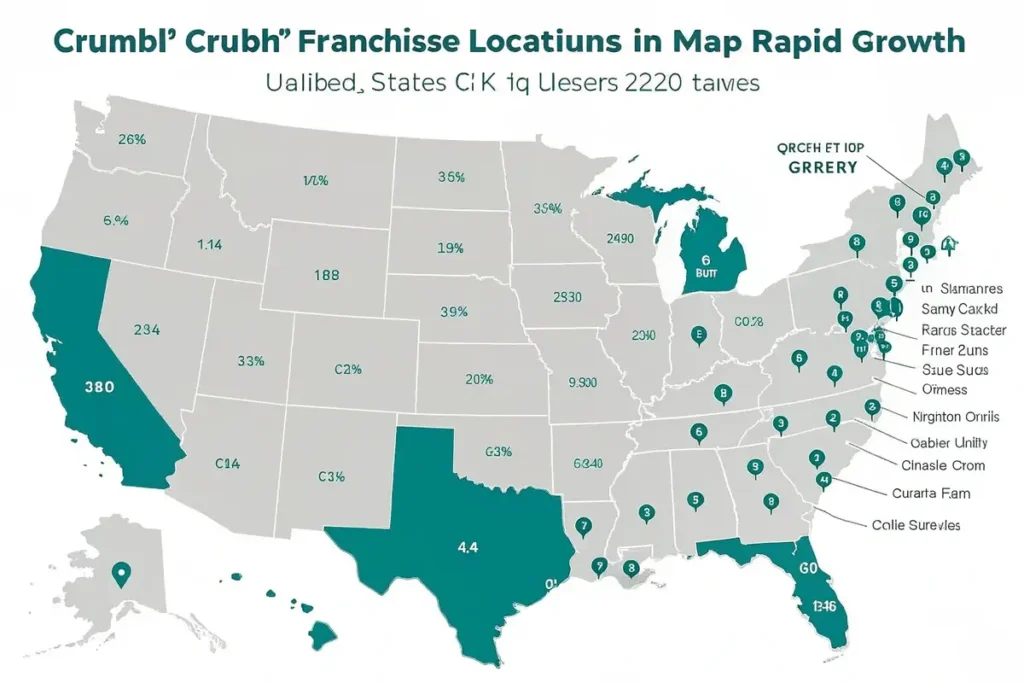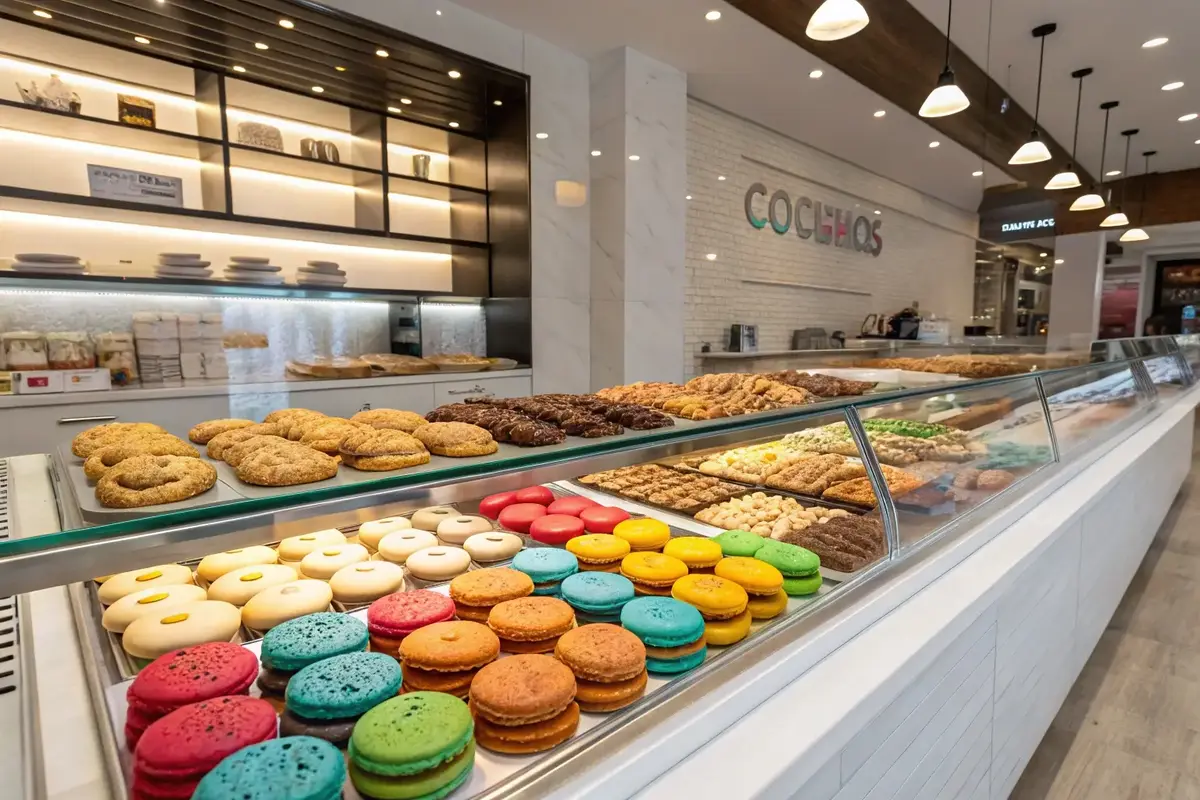Introduction
Crumbl Cookies has taken the dessert world by storm, offering a rotating menu of gourmet cookies that have captured the hearts of cookie lovers everywhere. But beyond the delicious flavors and aesthetic presentation, one question remains: Is Crumbl Cookie making money? This article explores the business model, revenue streams, and strategies behind the company’s success, shedding light on its profitability and growth.
Part 1: The Rise of Crumbl Cookies
How Crumbl Started
Crumbl Cookies was founded in 2017 by two cousins with a simple idea: create the perfect cookie. Starting with a single location in Logan, Utah, the brand quickly became a sensation. Its unique approach of offering a rotating menu of weekly flavors set it apart from traditional bakeries, and word spread like wildfire.
Expansion and Popularity
The company’s growth has been meteoric, fueled by its focus on social media marketing and customer engagement. Crumbl rapidly expanded through franchising, opening hundreds of locations across the United States in just a few years. This combination of rapid growth and innovative branding solidified its place as a major player in the dessert industry.
Innovative Marketing Strategies
Crumbl has mastered the art of creating buzz. Through platforms like TikTok and Instagram, the brand showcases its unique cookies, behind-the-scenes content, and customer reactions. The emphasis on visual appeal and exclusivity—offering limited-time weekly flavors—keeps customers coming back for more.
Part 3: Crumbl’s Revenue Streams
Sales from Cookie Retail
Crumbl Cookies generates the bulk of its revenue through retail cookie sales. With average cookie prices ranging from $3.50 to $5.00, the brand positions itself as a premium treat option. Customers often purchase multiple cookies due to the unique rotating flavors, increasing the average transaction value. Limited-time offerings create urgency, encouraging frequent visits and driving sales even higher.
Catering and Special Orders
Catering and special orders play a significant role in Crumbl’s revenue. The brand offers customizable cookie options for events such as weddings, corporate gatherings, and birthday parties. Large orders not only boost revenue but also increase brand visibility. By tailoring their offerings to fit the needs of various occasions, Crumbl strengthens its foothold in the premium dessert market.
Merchandise and Brand Collaborations
In addition to cookies, Crumbl capitalizes on its loyal fan base by selling branded merchandise. Items such as T-shirts, mugs, and hats allow customers to showcase their love for the brand. Collaborations with other companies and influencers further amplify their reach, adding an extra layer of revenue through strategic partnerships. This diversified approach reinforces Crumbl’s position as more than just a cookie shop—it’s a lifestyle brand.

Part 4: Financial Performance of Crumbl Cookies
Annual Revenue Estimates
Crumbl Cookies has experienced exponential growth, with recent reports estimating annual revenues surpassing $200 million. These figures reflect the company’s ability to scale quickly and capitalize on consumer demand for unique, high-quality desserts. Compared to competitors in the gourmet cookie space, Crumbl stands out due to its aggressive expansion and innovative offerings.
Profitability of Crumbl Locations
On average, Crumbl franchises generate impressive revenues, with some locations earning up to $1.7 million annually. High profit margins are attributed to their efficient business model, which emphasizes streamlined operations, strong branding, and customer loyalty. Factors such as low operational costs and high demand for premium desserts make Crumbl a profitable venture for franchisees.
Challenges and Expenses
Despite its success, Crumbl faces financial challenges. Rising costs of premium ingredients, marketing expenses, and the need for skilled staff can impact profit margins. Additionally, maintaining quality across hundreds of locations requires significant investment in training and supply chain management. Potential risks include market saturation and competition from emerging cookie brands. However, Crumbl’s innovative strategies help mitigate these challenges and maintain profitability.
Part 5: Industry Trends and Crumbl’s Competitors
Cookie Market Trends
The premium and gourmet cookie market has witnessed substantial growth in recent years. Consumers are increasingly drawn to high-quality, artisanal desserts that offer a blend of nostalgia and indulgence. Customizable options, such as selecting flavors, toppings, and sizes, have become a significant driver of this trend. Additionally, the rise of social media has amplified the demand for aesthetically pleasing treats, with cookies becoming a popular subject for viral food content.
Competitors in the Gourmet Cookie Space
Crumbl operates in a competitive landscape alongside brands like Insomnia Cookies and Levain Bakery. Insomnia focuses on late-night delivery, catering to a younger, convenience-driven demographic. Levain Bakery, on the other hand, is renowned for its dense, oversized cookies with a rustic, homemade appeal.
Crumbl differentiates itself through its rotating weekly menu, allowing customers to experience new flavors regularly. The brand’s in-store cookie preparation and visually appealing pink boxes also enhance its premium image. Crumbl’s digital presence, including an app for seamless ordering and loyalty rewards, further sets it apart from traditional competitors.

Part 6: Customer Perception and Retention
Customer Reviews and Feedback
Crumbl enjoys a loyal fan base, with many customers praising the brand for its innovative flavors and soft, melt-in-your-mouth texture. The rotating menu keeps the experience fresh and exciting, encouraging repeat visits. However, common criticisms include the high price point and occasional inconsistencies in flavor execution across locations.
For some, the oversized portion size is a bonus, while others see it as excessive. Customers also express a desire for more dietary-friendly options, such as gluten-free or vegan cookies, to make the brand more inclusive.
Strategies for Building Customer Loyalty
Crumbl leverages a range of strategies to foster customer loyalty. The company’s loyalty rewards program, accessible via its app, incentivizes repeat purchases by offering discounts and exclusive deals. Personalized experiences, like birthday promotions and interactive social media content, strengthen the emotional connection with the brand.
Crumbl also invests in community involvement, partnering with local events and charities to build goodwill. Seasonal promotions and collaborations with influencers further enhance customer engagement, ensuring that Crumbl remains top-of-mind in the competitive dessert industry.
Part 7: Frequently Asked Questions (FAQs)
How much does a Crumbl franchise earn annually?
Crumbl franchise owners typically generate substantial annual revenue, with estimates ranging between $1 million to $2 million per location. Factors such as location, customer demographics, and operational efficiency heavily influence profitability. The streamlined menu and high-volume sales model also contribute to consistent earnings.
What makes Crumbl’s business model so profitable?
Crumbl’s profitability stems from its unique business strategies, including its rotating weekly menu that keeps customers returning for new flavors. The company’s vertically integrated operations—such as in-house recipe development—reduce costs and maintain product consistency. Additionally, Crumbl leverages its social media presence to drive brand awareness, significantly reducing traditional advertising expenses.
Are Crumbl cookies priced too high for customers?
While some customers consider Crumbl’s cookies pricey, the brand positions itself as a premium dessert provider. Factors like oversized portions, fresh ingredients, and an elevated in-store experience justify the cost. Many loyal customers believe the quality and creativity of the cookies provide excellent value for money.
How does Crumbl compete with other dessert brands?
Crumbl differentiates itself through its innovative approach to flavor variety, combining weekly menu rotations with a focus on freshness and presentation. Unlike competitors, Crumbl prepares cookies in-store, creating an engaging customer experience. The brand’s strategic use of technology, such as its ordering app and social media campaigns, further cements its market position.
Does Crumbl plan to expand internationally?
Crumbl has hinted at the potential for international expansion, though current efforts remain focused on growing its presence within the United States. With the brand’s proven scalability and global interest in premium desserts, international markets could represent a significant growth opportunity in the future.
Part 8: The Sweet Success of Crumbl Cookies
Recap of Crumbl’s Journey to Financial Success
Crumbl Cookies has redefined the gourmet dessert industry through its innovative strategies and customer-first approach. By offering a unique weekly menu, engaging presentation, and a superior in-store experience, the brand has captured the hearts of cookie lovers across the country.
Emphasis on Its Innovative Strategies and Customer Appeal
Crumbl’s ability to stay ahead of market trends and adapt to customer preferences has solidified its position as a leading dessert brand. With a commitment to quality, creativity, and community engagement, the company has established itself as both a financial success and a cultural phenomenon.
Final Thoughts on Crumbl’s Future Growth Potential
Looking ahead, Crumbl’s strategic expansion and dedication to innovation suggest a bright future. Whether through new locations, collaborations, or international ventures, Crumbl continues to set the standard for what a premium dessert experience should be.

